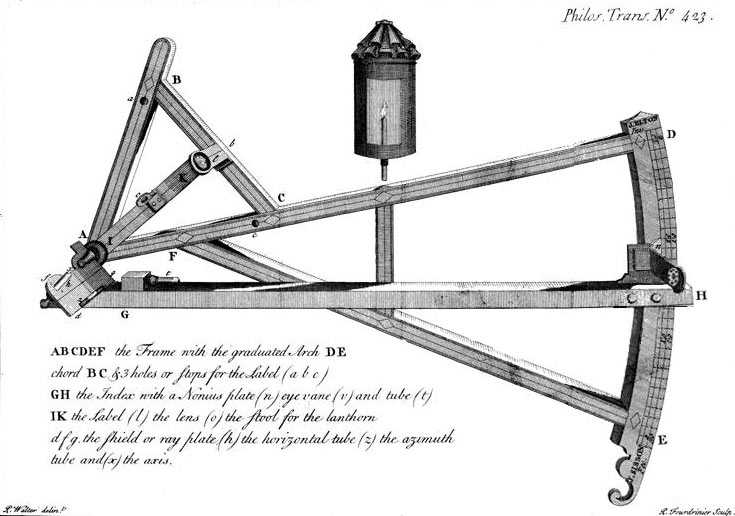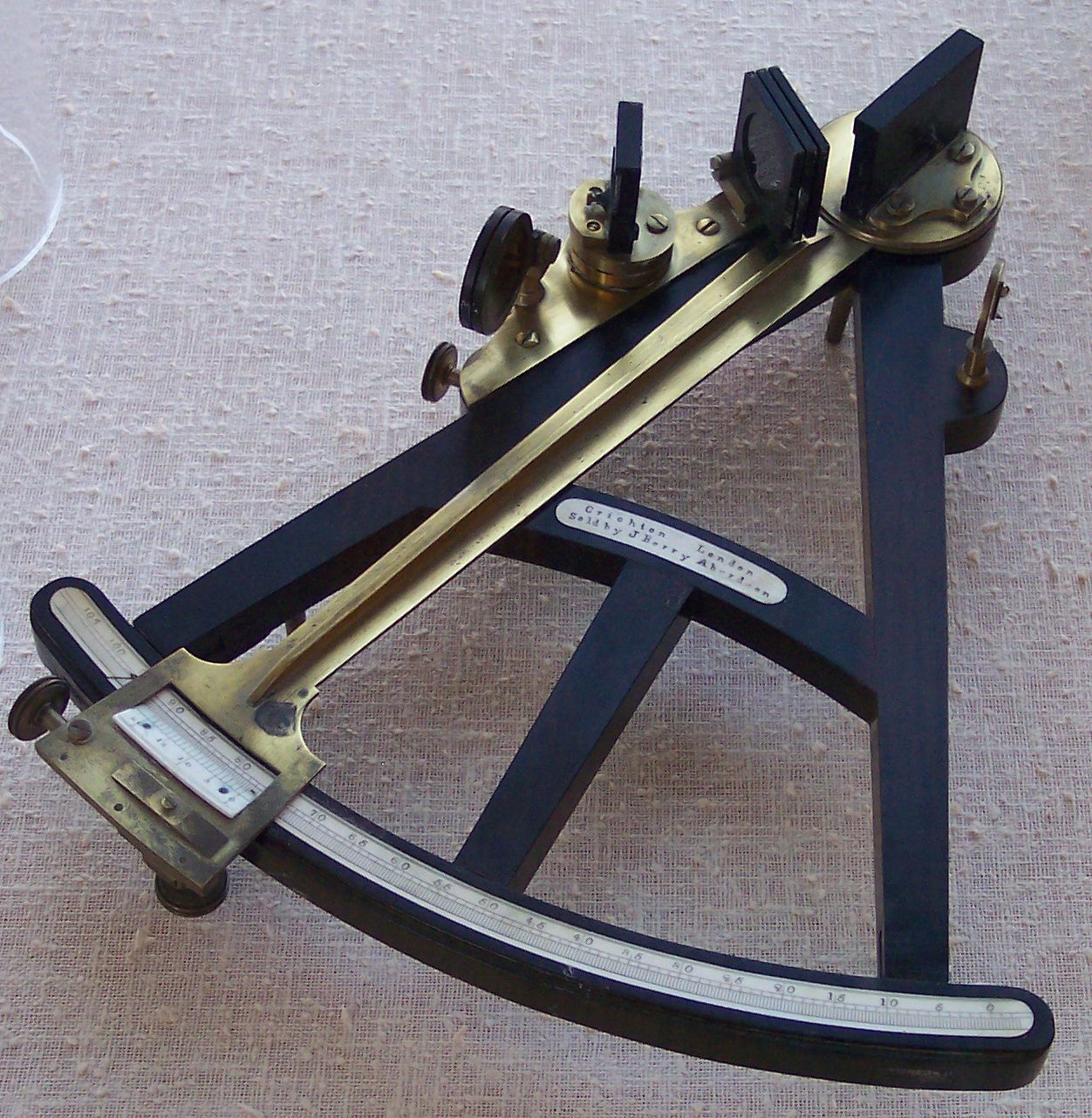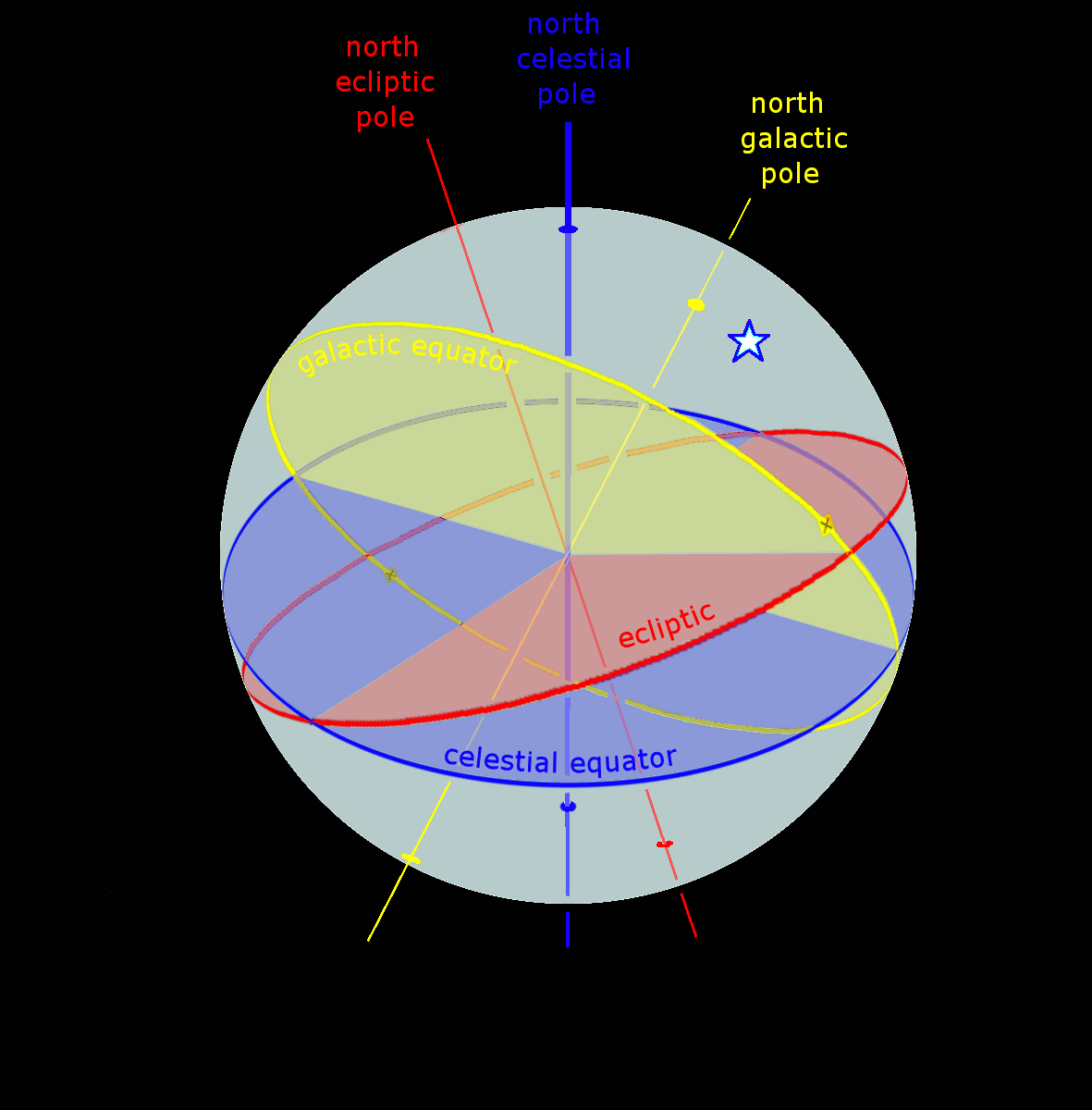|
Elton's Quadrant
An Elton's quadrant is a derivative of the Davis quadrant. It adds an index arm and artificial horizon to the instrument. It was invented by John Elton a sea captain who patented his design in 1728Bennett, Jim, "Catadioptrics and commerce in eighteenth-century London", in History of Science, vol xliv, 2006, pages 247-277. and published details of the instrument in the Philosophical Transactions of the Royal Society in 1732.Elton, John, ''The Description of a New Quadrant for Taking Altitudes Without an Horizon, Either at Sea or Land'', Philosophical Transactions of the Royal Society, Vol 37, No. 423, 1731-1732. Construction This instrument clearly reflects the shape and features of the Davis quadrant. The significant differences are the change in the upper arc to a simple triangular frame and the addition of an index arm. The triangular frame at the top spans 60° as did the arc on the backstaff. The main graduated arc subtends 30° as in the backstaff. The 30° arc is gradu ... [...More Info...] [...Related Items...] OR: [Wikipedia] [Google] [Baidu] |
Davis Quadrant
The backstaff is a navigational instrument that was used to measure the altitude of a celestial body, in particular the Sun or Moon. When observing the Sun, users kept the Sun to their back (hence the name) and observed the shadow cast by the upper vane on a horizon vane. It was invented by the English navigator John Davis, who described it in his book ''Seaman's Secrets'' in 1594. Types of backstaffs Backstaff is the name given to any instrument that measures the altitude of the sun by the projection of a shadow. It appears that the idea for measuring the sun's altitude using back observations originated with Thomas Harriot. Many types of instruments evolved from the cross-staff that can be classified as backstaves. Only the Davis quadrant remains dominant in the history of navigation instruments. Indeed, the Davis quadrant is essentially synonymous with backstaff. However, Davis was neither the first nor the last to design such an instrument and others are considered here ... [...More Info...] [...Related Items...] OR: [Wikipedia] [Google] [Baidu] |
Flamsteed
John Flamsteed (19 August 1646 – 31 December 1719) was an English astronomer and the first Astronomer Royal. His main achievements were the preparation of a 3,000-star catalogue, ''Catalogus Britannicus'', and a star atlas called ''Atlas Coelestis'', both published posthumously. He also made the first recorded observations of Uranus, although he mistakenly catalogued it as a star, and he laid the foundation stone for the Royal Greenwich Observatory. Life Flamsteed was born in Denby, Derbyshire, England, the only son of Stephen Flamsteed and his first wife, Mary Spadman. He was educated at the free school of Derby and at Derby School, in St Peter's Churchyard, Derby, near where his father carried on a malting business. At that time, most masters of the school were Puritans. Flamsteed had a solid knowledge of Latin, essential for reading the scientific literature of the day, and a love of history, leaving the school in May 1662.Birks, John L. (1999) ''John Flamsteed, the f ... [...More Info...] [...Related Items...] OR: [Wikipedia] [Google] [Baidu] |
Astronomical Instruments
Astronomical instruments include: *Alidade * Armillary sphere *Astrarium * Astrolabe *Astronomical clock *the Antikythera mechanism, an astronomical clock *Blink comparator *Bolometer *the Canterbury Astrolabe Quadrant *Celatone *Celestial sphere *Charge-coupled device *Computers *CMOS sensor *Coronagraph *Cosmolabe *Dioptra *Equatorial ring *Equatorium * Gnomon * Inclinometer * Interferometer * Kamal *Meridian circle * Microchannel plate detector *Mural instrument *Nebra sky disk *Nocturnal * Octant *Optical spectrometer, a.k.a., Spectrograph *Orrery *Photographic plate *Photometer *Planisphere *the Prague astronomical clock * Quadrant *Reticle *Radio plate *Retroreflector * Scaphe * Sextant * Starshade *Space telescope *Spectrometers *Sundial *Telescope *Torquetum * Triquetrum *Zenith telescope See also *Astronomy *Outline of astronomy *Surveying instrument *Measurement instrument {{DEFAULTSORT:Astronomical instruments Instruments Instrument may refer to: Science and te ... [...More Info...] [...Related Items...] OR: [Wikipedia] [Google] [Baidu] |
Measuring Instruments
A measuring instrument is a device to measure a physical quantity. In the physical sciences, quality assurance, and engineering, measurement is the activity of obtaining and comparing physical quantities of real-world objects and events. Established standard objects and events are used as units, and the process of measurement gives a number relating the item under study and the referenced unit of measurement. Measuring instruments, and formal test methods which define the instrument's use, are the means by which these relations of numbers are obtained. All measuring instruments are subject to varying degrees of instrument error and measurement uncertainty. These instruments may range from simple objects such as rulers and stopwatches to electron microscopes and particle accelerators. Virtual instrumentation is widely used in the development of modern measuring instruments. Time In the past, a common time measuring instrument was the sundial. Today, the usual measuring instru ... [...More Info...] [...Related Items...] OR: [Wikipedia] [Google] [Baidu] |
Navigational Equipment
Navigation is a field of study that focuses on the process of monitoring and controlling the motion, movement of a craft or vehicle from one place to another.Bowditch, 2003:799. The field of navigation includes four general categories: land navigation, marine navigation, aeronautic navigation, and space navigation. It is also the term of art used for the specialized knowledge used by navigators to perform navigation tasks. All navigational techniques involve locating the navigator's Position (geometry), position compared to known locations or patterns. Navigation, in a broader sense, can refer to any skill or study that involves the determination of position and Relative direction, direction. In this sense, navigation includes orienteering and pedestrian navigation. History In the European medieval period, navigation was considered part of the set of ''Artes mechanicae, seven mechanical arts'', none of which were used for long voyages across open ocean. Polynesian navigation ... [...More Info...] [...Related Items...] OR: [Wikipedia] [Google] [Baidu] |
Sextant
A sextant is a doubly reflecting navigation instrument that measures the angular distance between two visible objects. The primary use of a sextant is to measure the angle between an astronomical object and the horizon for the purposes of celestial navigation. The estimation of this angle, the altitude, is known as ''sighting'' or ''shooting'' the object, or ''taking a sight''. The angle, and the time when it was measured, can be used to calculate a position line on a nautical or aeronautical chart—for example, sighting the Sun at noon or Polaris at night (in the Northern Hemisphere) to estimate latitude (with sight reduction). Sighting the height of a landmark can give a measure of ''distance off'' and, held horizontally, a sextant can measure angles between objects for a position on a chart. A sextant can also be used to measure the lunar distance between the moon and another celestial object (such as a star or planet) in order to determine Greenwich Mean Time and hence ... [...More Info...] [...Related Items...] OR: [Wikipedia] [Google] [Baidu] |
Octant (instrument)
The octant, also called a reflecting quadrant (instrument), quadrant, is a reflecting instrument used in navigation. Etymology The name ''octant'' derives from the Latin ''octans'' meaning ''eighth part of a circle'', because the instrument's arc is one eighth of a circle. ''Reflecting quadrant'' derives from the instrument using mirrors to reflect the path of light to the observer and, in doing so, doubles the angle measured. This allows the instrument to use a one-eighth of a Turn (geometry), turn to measure a quarter-Turn (geometry), turn or Circular sector, quadrant. Origin of the octant Newton's reflecting quadrant Isaac Newton's reflecting quadrant was invented around 1699. A detailed description of the instrument was given to Edmond Halley, but the description was not published until after Halley's death in 1742. It is not known why Halley did not publish the information during his life, as this prevented Newton from getting the credit for the invention that is gene ... [...More Info...] [...Related Items...] OR: [Wikipedia] [Google] [Baidu] |
John Hadley
John Hadley (16 April 1682 – 14 February 1744) was an English mathematician, and laid claim to the invention of the octant, two years after Thomas Godfrey claimed the same. Biography He was born in Bloomsbury, London the eldest son of George Hadley of Osidge, East Barnet, Hertfordshire and his wife Katherine FitzJames. His younger brother George Hadley became a noted meteorologist. In 1717 John became a member (and later vice-president) of the Royal Society of London. In 1729 he inherited his father's East Barnet estate. He died in East Barnet in 1744 and is buried in the local churchyard with other members of his family. He had married Elizabeth, daughter of Thomas Hodges, FRS (former Attorney General of Barbados) and had one child, a son and heir John, born in 1738. Work In 1730 Hadley invented the reflecting octant, which could be used to measure the altitude of the sun or other celestial objects above the horizon at sea. A mobile arm carrying a mirror and pivotin ... [...More Info...] [...Related Items...] OR: [Wikipedia] [Google] [Baidu] |
Celestial Object
An astronomical object, celestial object, stellar object or heavenly body is a naturally occurring physical object, physical entity, association, or structure that exists in the observable universe. In astronomy, the terms ''object'' and ''body'' are often used interchangeably. However, an astronomical body or celestial body is a single, tightly bound, contiguous entity, while an astronomical or celestial ''object'' is a complex, less cohesively bound structure, which may consist of multiple bodies or even other objects with substructures. Examples of astronomical objects include planetary systems, star clusters, nebulae, and galaxy, galaxies, while asteroids, natural satellite, moons, planets, and stars are astronomical bodies. A comet may be identified as both body and object: It is a ''body'' when referring to the frozen Comet nucleus, nucleus of ice and dust, and an ''object'' when describing the entire comet with its diffuse Coma (cometary), coma and Comet tail, tail. Hi ... [...More Info...] [...Related Items...] OR: [Wikipedia] [Google] [Baidu] |
Celestial Coordinate System
Astronomical coordinate systems are organized arrangements for specifying positions of satellites, planets, stars, galaxies, and other celestial objects relative to physical reference points available to a situated observer (e.g. the true horizon and north cardinal direction to an observer situated on the Earth's surface). Coordinate systems in astronomy can specify an object's position in three-dimensional space or plot merely its direction on a celestial sphere, if the object's distance is unknown or trivial. Spherical coordinates, projected on the celestial sphere, are analogous to the geographic coordinate system used on the surface of Earth. These differ in their choice of fundamental plane, which divides the celestial sphere into two equal hemispheres along a great circle. Rectangular coordinates, in appropriate units, have the same fundamental () plane and primary (-axis) direction, such as a rotation axis. Each coordinate system is named after its choice of fundamental ... [...More Info...] [...Related Items...] OR: [Wikipedia] [Google] [Baidu] |
Perpendicular
In elementary geometry, two geometric objects are perpendicular if they intersect at a right angle (90 degrees or π/2 radians). The condition of perpendicularity may be represented graphically using the ''perpendicular symbol'', ⟂. It can be defined between two lines (or two line segments), between a line and a plane, and between two planes. Perpendicularity is one particular instance of the more general mathematical concept of '' orthogonality''; perpendicularity is the orthogonality of classical geometric objects. Thus, in advanced mathematics, the word "perpendicular" is sometimes used to describe much more complicated geometric orthogonality conditions, such as that between a surface and its '' normal vector''. Definitions A line is said to be perpendicular to another line if the two lines intersect at a right angle. Explicitly, a first line is perpendicular to a second line if (1) the two lines meet; and (2) at the point of intersection the straight angle on one side ... [...More Info...] [...Related Items...] OR: [Wikipedia] [Google] [Baidu] |
Alidade
An alidade () (archaic forms include alhidade, alhidad, alidad) or a turning board is a device that allows one to sight a distant object and use the line of sight to perform a task. This task can be, for example, to triangulate a scale map on site using a plane table drawing of intersecting lines in the direction of the object from two or more points or to measure the angle and horizontal distance to the object from some reference point's polar measurement. Angles measured can be horizontal, vertical or in any chosen plane. The alidade sighting ruler was originally a part of many types of scientific and astronomical instrument. At one time, some alidades, particularly using circular graduations as on astrolabes, were also called ''diopters''. With modern technology, the name is applied to complete instruments such as the 'plane table alidade'. Origins The word in Arabic ( , "the ruler"), signifies the same device. In Greek and Latin, it is respectively called , "''dioptra''" ... [...More Info...] [...Related Items...] OR: [Wikipedia] [Google] [Baidu] |







